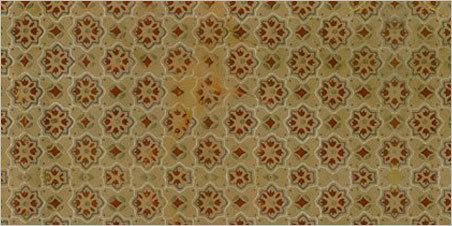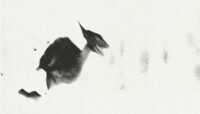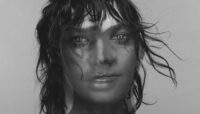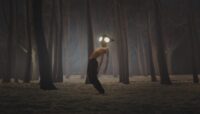
“Gold and Warm“
from the single Gold and Warm
2008
It’s a secret, and they’re dragging their feet. They don’t want to tell me. Ben Davis, lead singer of the audiophile Cincinnati duo Bad Veins, is looking at the wall, trapped in a booth at a downtown New York diner not wanting to reveal the meaning behind his group’s moniker. “People figure it out,” he assures me. As soon as the words are out of his mouth, I’ve solved the riddle on my own. I tell him, and he confirms that I’m right. He’s glad he didn’t have to give it away for free.
Davis, along with Bad Veins drummer Sebastien Schultz, strives to maintain the dignified mystery that he assigned to the recording project when he started it in 2006. They are the only band at festivals not attempting to shove their demo into the unwelcoming hands of industry types. In fact, they are slow to identify themselves as even being in a band.
The duo’s twin commitment to discretion runs the gamut; they are understated in appearance, opting for drab olive and aqua soldier uniforms onstage, and their music fades and builds in a way that doesn’t immediately draw attention to itself. But the antique tableau created by their slowly spinning tape machine, military garb, and blood-red roses they’ve painted on their P.A. and bass drum is too jarring to look away from for very long. As wallflowers, they pop out. Their visual aesthetic and music are so hypnotizing that they are impossible to ignore.
At a Bad Veins show their tape machine, or more specifically their 1973 Pioneer reel-to-reel tape recorder, serves as the focal point, and they often give her (not only is it a she, but she has been dubbed “Irene”) center stage while they play on either side. “We embraced it instead of trying to hide it,” explains Davis. “We’re not playing all of it; it’s right there, you can see it spinning.” Schultz adds, “For us, as music fans, we figured that makes more sense. If I go to a show, and the band is going to use a backing track, I would like to see more than just some guy tap an iPod.”
Because their booming symphonies require more instruments than two musicians can play at one time, Bad Veins is reliant on an intricately rigged set of old- and new-school electronics: a painted box houses dozens of crisscrossed cables linking the P.A. to Davis’ keyboard, guitar, mint green analog telephone-turned microphone, a second mic Davis sings into through a megaphone, the reel-to-reel, and Schultz’s drums. The setup is precarious and stressful for the band; one bad wire or plug in the wrong place can ruin the entire chain. But Davis loves the wires, seeing them as symbolic of both Bad Veins’ aesthetic and humanity in general. “There’s something intuitive about the name Bad Veins and our flowers that we have on everything. The anatomy of a flower is similar to the anatomy of a person. They are both complex and delicate, intricately connected inside, like electronics and wiring are. The idea links us and our gadgetry together.”
Coming from the Midwest, where garage rock is king (Cincinnati gets the Detroit spillover), makes Bad Veins an anomaly as much for their sound as for their aversion to self-promotion. “My old band was a sloppy, indie Pavement sound. I just hear orchestras in my head,” Davis confesses. “After the band broke up there was a click. I just started hearing music that was very complicated, which Bad Veins is not. It sounds snobby to say it’s complicated. I hear heavily layered, lush things in my head, and I try to recreate them.”
With no release on the market for over a year, Bad Veins drew crowds to a handful of shows through curiosity and word of mouth. This year saw their first set of four tracks available as free digital downloads on RCRD LBL and as a vinyl EP through Dovecote Records. So far RCRD LBL has posted Bad Veins fan favorite “Gold and Warm” as well as “Afraid,” with the other two songs soon to follow.
The night before our diner interview, I went to see Bad Veins at White Rabbit, a tiny club on the Lower East Side of Manhattan. Acoustics there are huge, which made it even more obvious that there were only two skinny guys in combat uniforms making a ton of noise with just a PA, tape machine, some keys and guitar, a megaphone, and a telephone receiver. Something about the big sound they were making cemented the audience in place. No one walked away or even so much as looked away for the entire half hour set.


